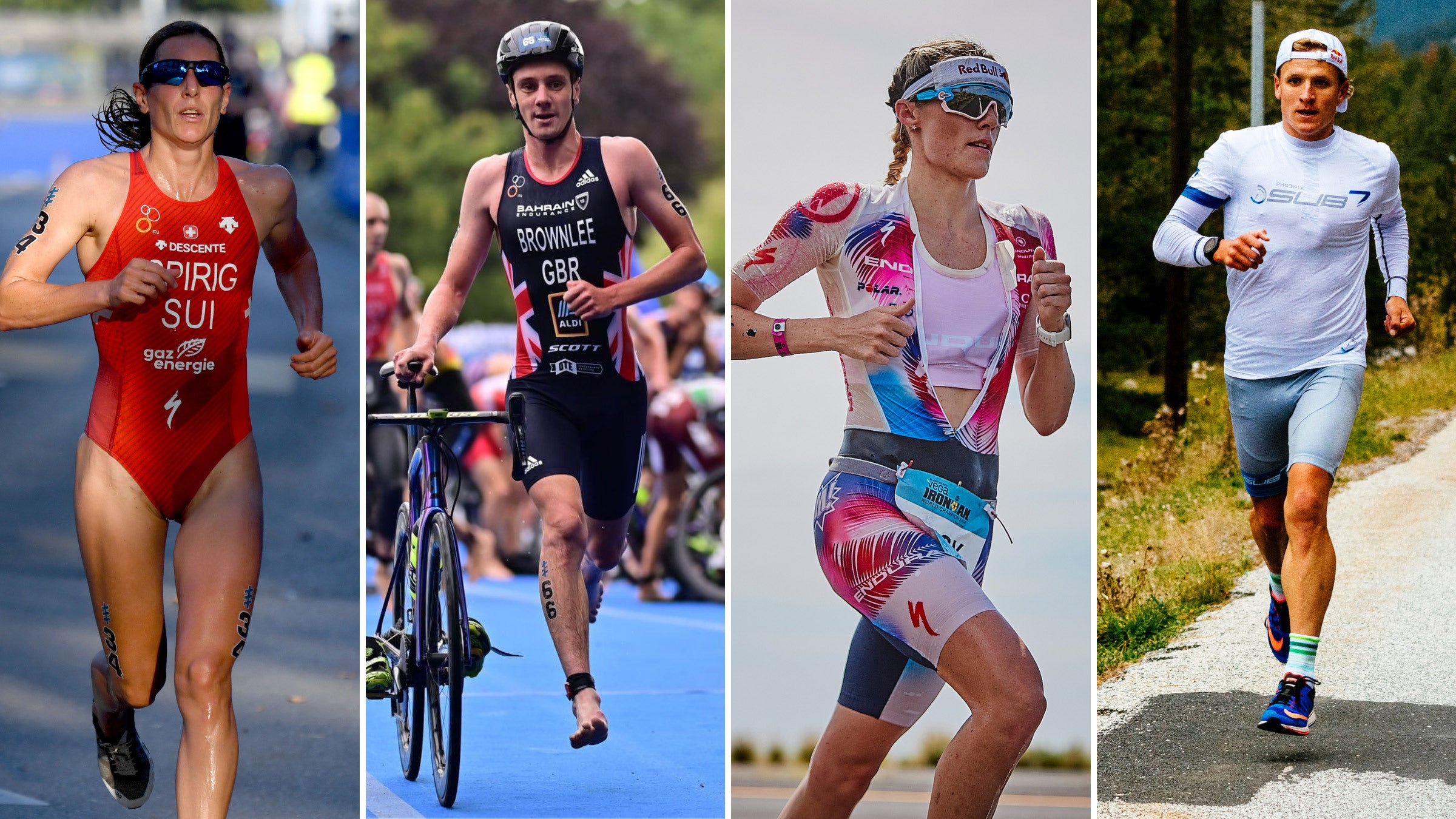Will Four Superstars Break 7 Hours/8 Hours for the Iron-Distance?

This is a special edition of Last Weekend Now—typically your Monday morning rundown of what’s happening in pro triathlon, brought to you with commentary by Brad Culp. (Ed note: So yell at him if you don’t like the comments.)
At some point in early 2022, Alistair Brownlee, Kristian Blummenfelt, Lucy Charles-Barclay, and Nicola Spirig will attempt something seemingly impossible. The two men will attempt to break seven hours for an iron-distance triathlon and the two women will try to break eight.
As was the case with the first attempt at Nike’s Breaking2 project, succeeding or failing isn’t really the point. Some 13.1 million people tuned in to watch Eliud Kipchoge fall just 25 seconds short of running a marathon in less than two hours in 2017, many of whom were watching him run for the first time. (Two years later, at the Ineos 1:59 Challenge, Kipchoge ran 1:59:40 with approximately 4.9 million people watching.)
The organizers of Pho3nix Sub7/Sub8 are hopeful this stunt could generate similar viewership and social media buzz, helping to elevate the sport and the four athletes involved. Behind this unique event is Singapore-based Manna Group, which is led by triathlon legend Chris McCormack. “Macca” has also been the driving force behind billionaire-funded SuperLeague and Bahrain Endurance 13, and now he’s found another magnate to bankroll an ambitious triathlon project. This time it’s Pho3nix Foundation Founder Sebastian Kulczyk, who is one of the richest people in Poland.
The nonprofit Pho3nix Foundation describes itself as a “social welfare organization helping children around the world who are the most talented at sports and whose material situation is the main obstacle preventing them from achieving their goals and embarking on a championship career.” Basically they want kids from less fortunate circumstances to have a chance at becoming world-class athletes.
Kulczyk is an Ironman athlete himself, most recently finishing Ironman New Zealand in 12:28 last March. His foundation sponsors six triathletes (Katie Zaferes, Vincent Luis, Georgia Taylor-Brown, Radka Kahlefeldt, Jack Birtwhistle, and Alistair Brownlee) and now he’s expanded his investment in triathlon with Sub7/Sub8, which we still don’t know that many details about.
We do know that Daniela Ryf was offered a chance to participate but declined. It’s unknown whether Jan Frodeno (the men’s Ironman world record holder) also turned down the opportunity. While we do know time-saving measures like bike pacers and thicker wetsuits will be utilized, we don’t know when or where the attempt will be made. One option reportedly being explored is Daytona International Speedway, site of the inaugural PTO 2020 Championship last December. Wherever it’s held, it will be on a closed course with all four athletes racing simultaneously. Other auto-racing venues in North America are also being scouted as potential venues.
No matter where or when it’s held, it would be nearly impossible for Brownlee or Blummenfelt to get close to the seven-hour mark. That would require a 45-minute swim, 3:45 bike, and 2:30 run—and that doesn’t include at least one minute total for transitions. Blummenfelt has never run a marathon (yet), and Brownlee’s best run off an iron-distance bike is 2:43. Brownlee would have to shave more than 45 minutes off of his Ironman PR of 7:45. A group of pacers might be able to give him 30 minutes on the bike, but no amount of pacers can give him 15 minutes on the marathon.
For the women there’s a glimmer of hope, especially with Charles-Barclay, whose PR at the iron-distance is only 36 minutes shy of the eight-hour mark. If a clever bike-pacing strategy can give her 30-minutes on the bike, then she can at least make it interesting late in the run. Breaking eight hours means a 45-minute swim, 4:15 ride, and a sub-three-hour marathon. Given unlimited pacers on the bike and run, that doesn’t seem completely out of her reach. She might even be able to tow a few swim pacers to a 45-minute swim.
Heading into an uncertain 2021 season, the promise of another high-profile professional event is welcome news for the triathlon community. As PTO demonstrated with its inaugural Championship in Daytona, long-course triathlon can make for compelling TV—even if they don’t hit the actual record marks.